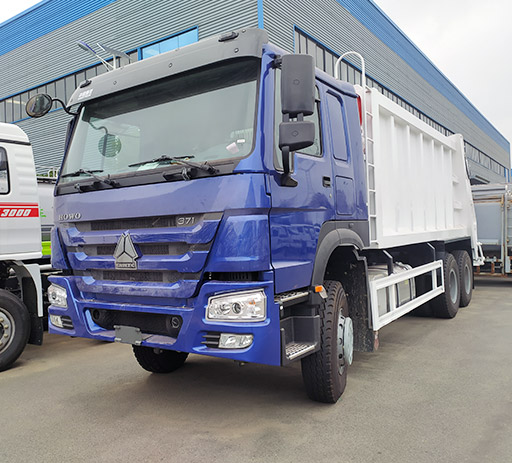China Motors: The Rise of the Automotive Giant

China has emerged as one of the world’s most powerful nations in the automotive sector over the past few decades. With a booming economy and a growing middle class, the country has become a hub for automotive manufacturing, technology, and innovation. This article delves into the automotive landscape in China, exploring the key players, trends, challenges, and future prospects.
The Evolution of the Chinese Automotive Industry
A Historical Overview
China’s automotive journey began in the early 20th century, but it gained real momentum in the 1980s when economic reforms were introduced. State-owned enterprises dominated the market initially, but globalization and foreign investments have led to diversification and competition.
Key Milestones in the 21st Century
- 2001: China joined the World Trade Organization, leading to an influx of foreign automotive manufacturers.
- 2010: China became the world’s largest automotive market, surpassing the U.S.
- 2020: The government launched initiatives promoting electric vehicles (EVs) and reduced emissions.

Leading Players in the Chinese Automotive Market
Domestic Manufacturers
Chinese car manufacturers have made significant strides in both domestic and international markets, with several leading the charge:

- Geely: Known for acquiring Volvo and expanding into international markets.
- BYD: Specializes in electric vehicles and batteries, and is a significant player in EVs globally.
- SAIC Motor: A state-owned enterprise collaborating with global partners like Volkswagen and GM.
Foreign Investments
Many international automotive giants have established joint ventures with Chinese companies to navigate regulatory landscapes:
- Tesla: Built a Gigafactory in Shanghai, becoming the first wholly foreign-owned car manufacturer in China.
- Volkswagen: Has multiple joint ventures with local brands to capture the vast market.
The Shift Towards Electric Vehicles
Government Policies and Incentives
The Chinese government is heavily investing in electric vehicles to combat pollution and reduce dependence on oil. Incentives include:
- Subsidies for EV purchases
- Tax breaks for manufacturers
- Investment in charging infrastructure
Notable Electric Vehicle Brands
| Brand | Year Established | Popular Models |
|---|---|---|
| BYD | 1995 | Han EV, Tang EV |
| NIO | 2014 | ES8, EC6 |
| Xpeng | 2014 | P7, G3 |
Challenges Facing the Chinese Automotive Industry
Overcapacity and Competition
With the rapid increase in car manufacturers, overcapacity has become a significant issue. Intense competition leads to price wars, threatening profitability.
Environmental Concerns
Although the shift towards electric vehicles aims to address environmental issues, pollution remains a critical concern in many urban areas. Striking a balance between growth and sustainability is essential.
Technological Advancements
The constant race for innovation poses challenges as manufacturers must stay ahead with new technologies like autonomous driving, AI in vehicles, and smart connectivity.
The Global Impact of China Motors
Exports and International Collaborations
China is not just a manufacturing hub; it is also becoming a significant exporter of vehicles. Manufacturers are expanding their presence in Europe, the Americas, and beyond.

Brand Recognition and Consumer Trust
As domestic brands like Geely and BYD gain international attention, building consumer trust through quality and performance is vital for global expansion.
Future Trends in Chinese Automotive Manufacturing
Smart and Connected Cars
The integration of smart technology into vehicles is on the rise. Manufacturers are focusing on in-car technologies, connectivity, and user experience.
Hydrogen Fuel Cell Technology
While electric vehicles dominate discussions, hydrogen fuel cell technology is emerging as a potential alternative energy source with ongoing research and development.
How to Buy a Car in China
Understanding the Market
Buying a car in China involves knowing the local market conditions, prices, and regulations. Here are some practical tips:
- Research reputable dealerships.
- Compare prices across different models.
- Check for government incentives on EV purchases.
Financing Options
Various financing options are available, including:
- Bank loans: Traditional loans from banks with competitive interest rates.
- Leasing: A popular option for those who want flexibility.
Frequently Asked Questions
What are the top automotive brands in China?
The leading automotive brands include Geely, BYD, SAIC Motor, and NIO, among others, with a strong focus on electric vehicles.
How does the Chinese government support the automotive industry?
The government provides incentives such as subsidies for electric vehicle purchases, tax breaks for manufacturers, and investment in charging infrastructure.
Are Chinese cars reliable?
Chinese automotive manufacturers have improved significantly in quality over the years, but it’s essential to research specific brands and models to ensure reliability.
What is the future of electric vehicles in China?
The demand for electric vehicles is expected to grow as the government promotes green energy and consumers become more environmentally conscious.
Can foreign companies operate in the Chinese automotive market?
Yes, foreign companies can operate in China, often through joint ventures with local manufacturers, navigating regulatory requirements.
What are the challenges facing the automotive industry in China?
Challenges include overcapacity, intense competition, environmental concerns, and the need for continuous technological advancements.
